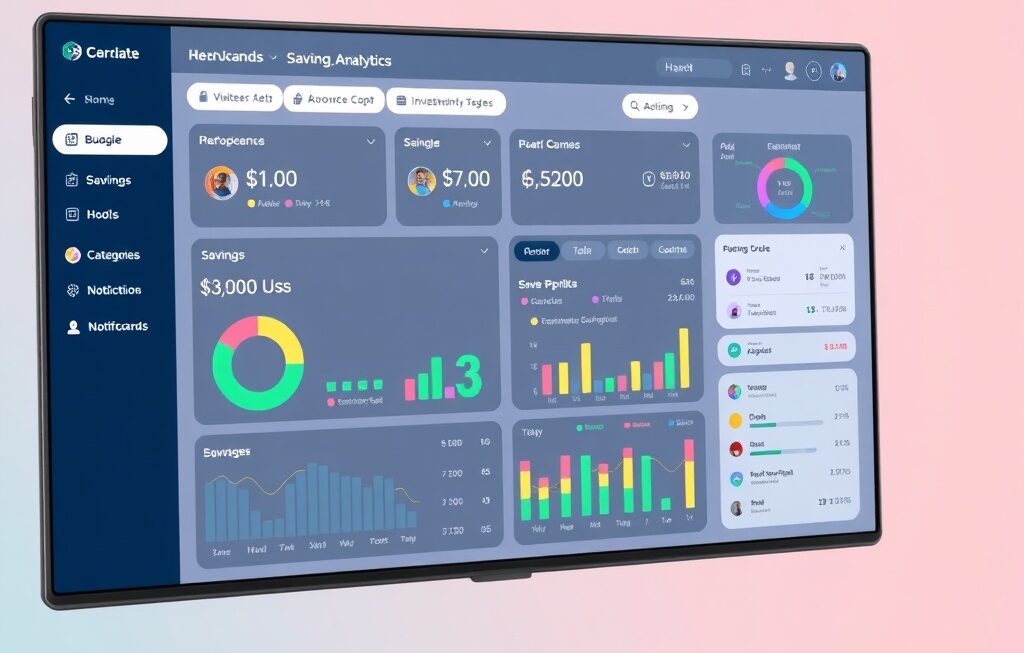In an increasingly unpredictable global economy, financial independence has become a primary goal for millions of people worldwide. One of the most effective ways to achieve this goal is by building wealth through passive income streams.
Unlike active income — which requires continuous effort and time — passive income allows individuals to earn money even while they sleep, providing financial security, flexibility, and long-term growth. In 2025, as digital platforms, automation, and investment opportunities evolve, passive income has become more accessible than ever before.
However, creating sustainable passive income is not a matter of luck. It requires strategy, discipline, and a deep understanding of financial fundamentals. This article explores the most effective ways to build wealth through passive income streams, offering a comprehensive guide for individuals looking to create lasting financial stability and freedom.
Understanding Passive Income
Passive income refers to money earned with minimal ongoing effort after an initial investment of time, money, or expertise. Common examples include dividends from stocks, rental income, royalties, and revenue from online businesses. The goal of passive income is to create systems that generate continuous returns without requiring constant active participation.
In contrast to active income — where your earnings depend directly on hours worked — passive income provides scalability. For instance, an investor can earn dividends from a portfolio indefinitely, or a content creator can generate ad revenue for years from a single piece of digital content.
Yet, building passive income requires careful planning and patience. It’s not a shortcut to wealth but a long-term strategy rooted in financial literacy and smart investment decisions.
The Importance of Passive Income
The year 2025 has brought both challenges and opportunities in the financial world. Economic uncertainty, automation, and evolving job markets have increased the importance of diversifying income sources. Passive income provides a safety net against job loss, inflation, and market volatility.
Moreover, with the rise of digital technology, the barriers to creating passive income have lowered significantly. Anyone with internet access can build online revenue streams through platforms like YouTube, affiliate marketing, or digital real estate. Meanwhile, investors can easily access global markets, fractional shares, and real estate crowdfunding.
Therefore, understanding how to create, manage, and grow passive income streams has become an essential skill for long-term financial success.
1. Dividend Investing
Dividend investing remains one of the most traditional and reliable methods for generating passive income. It involves purchasing shares of companies that pay regular dividends — a portion of profits distributed to shareholders. Over time, these dividends can compound, providing steady returns alongside potential stock appreciation.
In 2025, investors have access to various dividend-focused ETFs (Exchange-Traded Funds), making diversification easier. Companies in sectors like utilities, consumer goods, and finance are known for stable dividend payouts. Reinvesting dividends through a Dividend Reinvestment Plan (DRIP) accelerates compounding and long-term wealth growth.
For example, investing $10,000 in a portfolio yielding 5% annually can generate $500 per year initially. With reinvestment, that amount grows exponentially, becoming a cornerstone of financial independence.
2. Real Estate Investments
Real estate remains one of the most powerful vehicles for passive income. Rental properties provide consistent monthly cash flow while appreciating over time. In 2025, new models such as fractional real estate investing and Real Estate Investment Trusts (REITs) allow individuals to invest without owning physical property.
Platforms like Fundrise, RealtyMogul, and CrowdStreet make it possible to invest in commercial and residential real estate projects with minimal capital. REITs, on the other hand, trade on public exchanges and distribute a majority of their profits as dividends.
Successful real estate investors focus on high-demand areas, low vacancy rates, and proper maintenance. While it may require upfront capital and management, the long-term returns can be substantial, particularly when combined with property appreciation and tax benefits.
3. Peer-to-Peer Lending
Peer-to-peer (P2P) lending platforms connect borrowers directly with investors, eliminating traditional banks. Through platforms like LendingClub, Prosper, or Mintos, individuals can earn interest on the money they lend, generating consistent returns.
Although P2P lending involves some risk — primarily default — diversifying across multiple loans and assessing borrower ratings can reduce potential losses. Annual returns typically range from 5% to 10%, making it an attractive addition to a diversified passive income portfolio.
4. Royalties from Creative Work
The digital era has empowered creators to monetize their skills through royalties. Authors, musicians, photographers, and designers can generate ongoing revenue from published works, licensing, or intellectual property rights.
For example, self-publishing on Amazon Kindle Direct Publishing (KDP) or selling stock photos on Shutterstock and Adobe Stock can produce long-term income. Similarly, online educators who create courses on platforms like Udemy or Skillshare earn royalties each time a student enrolls.
Though it requires effort upfront, creative royalties represent true passive income once established — generating revenue long after the initial work is completed.
5. Building Digital Assets
Digital assets are one of the fastest-growing sources of passive income in 2025. Websites, blogs, and online stores can generate revenue through advertising, affiliate marketing, or digital products. Once set up, these assets can produce steady cash flow with minimal ongoing involvement.
Affiliate marketing, for example, rewards individuals for promoting products or services. Each time a user makes a purchase through your referral link, you earn a commission. Similarly, blogging or running a YouTube channel can generate income through ads and sponsorships.
While success requires consistent effort in the beginning — content creation, audience building, and SEO optimization — digital assets can eventually operate semi-autonomously, creating ongoing income streams for years.
6. High-Yield Savings and Bonds
While not as lucrative as other investments, high-yield savings accounts and government bonds offer low-risk passive income. In 2025, as interest rates fluctuate globally, some digital banks and financial platforms offer savings accounts with annual yields above 4%.
Government bonds and corporate bonds also provide predictable income through interest payments. Investors seeking stability rather than aggressive growth can balance their portfolios with these assets, ensuring consistent returns and capital preservation.
7. Investing in Index Funds and ETFs
Index funds and ETFs remain some of the simplest and most effective ways to generate passive income. These funds track market indices — such as the S&P 500 — providing diversification and long-term growth with minimal management.
In 2025, low-cost ETFs have become widely accessible through platforms like Vanguard, Fidelity, and Charles Schwab. Many also distribute dividends, contributing to steady cash flow. Over time, compounding returns from ETFs can significantly increase wealth, making them an ideal option for long-term investors seeking both growth and stability.
8. Licensing and Intellectual Property Income
If you’ve created a product, design, or invention, licensing can generate passive income by allowing others to use your intellectual property for a fee. This is common in industries such as software, technology, and entertainment.
For instance, app developers can license their software, and inventors can receive royalties from patented products. Though this path requires creativity and upfront effort, it can yield ongoing financial rewards for years or even decades.
9. Creating an Online Course or Subscription Model
Education has become one of the most profitable digital industries. If you possess specialized knowledge or skills, creating an online course can become a powerful source of passive income. Once uploaded, platforms like Teachable, Coursera, or Skillshare handle enrollment, payment, and delivery automatically.
Another variation is the subscription model — offering exclusive content through platforms like Patreon or Substack. This creates predictable, recurring revenue while allowing creators to build loyal communities.
10. Automating Investments with Robo-Advisors
Robo-advisors like Betterment, Wealthfront, and SoFi have simplified investing for passive income seekers. These platforms use AI algorithms to allocate, rebalance, and manage portfolios based on individual goals and risk tolerance. Investors benefit from long-term returns without needing constant monitoring or expertise.
Automation ensures emotional discipline, a key advantage in volatile markets. By consistently investing through robo-advisors, individuals can build wealth efficiently and passively over time.
Balancing Risk and Return
While passive income is attractive, not all streams are risk-free. Stock markets fluctuate, tenants can default, and digital platforms evolve. Therefore, diversification remains the cornerstone of sustainable passive income. Combining multiple income sources — such as dividends, real estate, and digital ventures — reduces exposure and enhances financial security.
Risk management strategies include maintaining an emergency fund, setting realistic expectations, and reinvesting profits strategically. Understanding each investment’s risk-return profile ensures informed decisions and long-term success.
Reinvesting for Compound Growth
One of the most powerful ways to build wealth through passive income is reinvestment. Instead of withdrawing returns, channel them back into your income-generating assets. This creates a compounding effect — where returns generate further returns — accelerating financial growth exponentially.
For instance, reinvesting dividends or rental income can expand your portfolio and increase future earnings. Over time, this disciplined approach can transform modest investments into significant wealth.
The Psychological Advantage of Passive Income
Beyond financial benefits, passive income offers psychological freedom. Knowing that money is working for you — rather than the other way around — provides peace of mind and reduces financial stress. This sense of autonomy enables individuals to pursue personal goals, creative projects, or early retirement.
However, building passive income requires patience and a long-term mindset. Success does not happen overnight, but through consistent action, learning, and adaptation.
The Future of Passive Income
The future of passive income is evolving alongside technology. Decentralized finance (DeFi), artificial intelligence, and blockchain innovations are opening new avenues for earning. Smart contracts now allow investors to earn interest automatically on digital assets, while tokenized investments are democratizing access to wealth-building opportunities.
Moreover, the global trend toward financial independence — driven by online communities and education — continues to empower individuals to take control of their financial futures. In this landscape, passive income is not merely a luxury but a necessity for long-term financial security.

In Summary: Building Wealth Through Passive Income Streams
Building wealth through passive income streams is a strategic path toward financial freedom. Whether through investments, real estate, or digital assets, the key lies in diversification, consistency, and reinvestment. In 2025 and beyond, those who understand and leverage the power of passive income will not only protect themselves against economic uncertainty but also gain the freedom to design the life they desire.
Financial independence is achievable — not by working harder, but by working smarter. By building multiple streams of passive income, you create a foundation of wealth that continues to grow, even when you’re not actively pursuing it.




